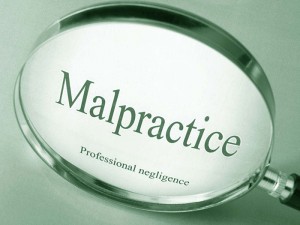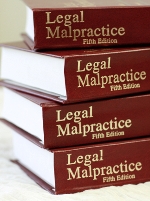 Texas Lawyer reported that three weeks before trial, AmLaw 200 mem-ber Gordon Rees Scully Mansukhani, LLP settled a malpractice lawsuit filed by a physicians’ group that alleged it drafted a “woefully inadequate” settle-ment agreement in a business dis-pute.
Texas Lawyer reported that three weeks before trial, AmLaw 200 mem-ber Gordon Rees Scully Mansukhani, LLP settled a malpractice lawsuit filed by a physicians’ group that alleged it drafted a “woefully inadequate” settle-ment agreement in a business dis-pute.
Background
The underlying case involved a dis-pute among the six physician-partners of Medical Anesthesia Associates (MAA), of Houston, TX, which provided anesthesia and pain management at medical facilities.
According to plaintiffs’ malpractice complaint, in June 2007, MAA entered into an “ex-clusive and lucrative” contract to provide anesthesia and other services to Sugar Land Surgical Hospital.
In the fall of 2011, the hospital informed MAA that physician-partners Thomson and Linde “were trying to secure MAA’s exclusive provider agreements for themselves in violation of their duties to MAA.”
MAA fired Thomsen and Linde, and MAA and three of the other partners – Chang, Sickler, and Wong – hired Gordon Rees to represent them in the dispute with Thomson and Linde.
On Oct. 10, 2011, Thomson and Linde sued MAA and Chang, Sickler, Wong, and Lai (the other physician-partner) for tortious interference and breach of fiduciary duty, among other allegations.
The defendants referred the lawsuit to Gordon Rees, and filed a counterclaim that al-leged tortious interference, breach of contract, breach of fiduciary duty, etc.
On Oct. 14, 2011, the hospital notified MAA that it was terminating its contract as of Jan. 15, 2012, which cost MAA millions of dollars in revenue.
The lawsuit between the four MAA physicians and Thomson/Linde was mediated on Dec 8, 2011. However, in the roughly six weeks leading up to it, Gordon Rees allegedly “churn(ed) fees in excess of $250,000” to draft and file motions and pleadings.
At mediation, Gordon Rees advised the four MAA physicians to enter into a settlement agreement with Thomson and Linde that provided for the six physicians to form a new company called Sugar Land Anesthesia, which would be 75%-owned by Thomson and Linde.
The agreement was finalized, but Gordon Rees allegedly failed “to include definitive language in the settlement agreement concerning the new company…to bind the parties (which) was fatally negligent and caused a clearly foreseeable onslaught of subsequent, yet entirely avoidable, litigation.”
On Oct. 5, 2012, Chang, Sickler, Wong, and Lai – the four MAA physicians – sued Thomson, Linde, and related companies for breach of the settlement agreement, and other causes of action.
They claim that they spent more than $1.3 million on attorney and expert fees on the matter, “arguing about the vague terms contained within the settlement agreement and its overall incompleteness.”
The case was settled on April 1, 2015, when Thomson and Linde agreed to pay them $2,125,000.
Malpractice Claim
Chang, Sickler, and Wong filed suit on behalf of MAA in the 269th District Court in Harris County, against Gordon Rees, Houston office managing partner Joseph DiCecco, part-ner Glenn LeMay, and senior counsel Christopher Raney, alleging negligence and breach of fiduciary duty in drafting the settlement agreement that created Sugar Land Anesthesia.
“Rather than ending the dispute among the parties, the deficiencies in the settlement agreement—which was the product of over $250,000 in unreasonable attorney fees— caused an onslaught of continuing yet completely avoidable litigation amongst these same parties concerning the terms in the agreement and what the agreement was sup-posed to contemplate. Even worse, due to the lack of specificity and protections in the agreement, the legal document was used as a proverbial license to steal, ultimately damaging plaintiffs over $1,800,000”.
The plaintiffs sought $1.8 million in actual damages, plus punitive damages and fee forfeiture for “knowing and intentional breach of fiduciary duty.”
Gordon Rees attorney DiCecco said “we vehemently disagree with the assertions made in the pleadings, and look forward to the opportunity for the truth to prevail on the re-cord.”
Litigation
In March, 2016, the court granted Gordon Rees’ motion for summary judgment on the negligence claim.
Settlement
On August 8, 2016, the plaintiffs’ filed a motion to dismiss their lawsuit with prejudice.
The judge granted the motion, and the case was concluded.
DiCecco of Gordon Rees said that the negligence claims that were dismissed via sum-mary judgment were the “most significant aspect of the case”, and that summary judg-ment “speaks volumes” about the suit.
He added, “subsequently, the parties were able to amicably resolve the remaining port-ion of the dispute in a confidential settlement”.
Plaintiff’s attorney Lance Kassab confirmed the settlement, but wouldn’t discuss the terms, due to the confidentiality agreement.



